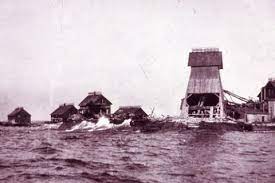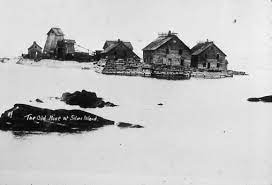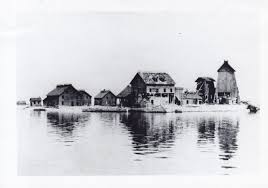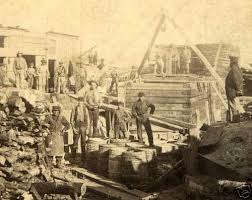Silver Islet
Historical Mines
In 1868, one of the richest veins of silver was discovered on Silver Islet,a tiny Island located at the tip of the Sibley Peninsula in Lake Superior, by the Montreal Mining Company. The company sold it in 1870 to an American, Alexander H. Sibley, who formed the Silver Islet Mining Company.
The mine was extremely difficult to set up but it proved worthwhile as it ended up being one of the most successful silver mines in the world. The mine shafts from this tiny island were up to 384 meters deep, far under Lake Superior's water. Supplies were brought in by ship in the summer and and dog sled in the winter, when the lake froze over.
William B. Frue, the lead engineer, established breakwaters to protect the island and over time increased the size of the island by filling them with crushed rock. It was expanded to over ten times its original size. A small town was built on the nearby shore. Pumps were used to keep water out of the mine shaft.
In 1878, after most of the silver had been removed, a second vein was discovered. By 1883 the best silver had been mined and with prices down mining was questionable but Lake Superior made the final decision for its closing.
The ship bringing the coal to power the steam engines for the pumps became stranded by a Lake Superior storm. In early 1884 the mine shafts were flooded and the mining adventure on Silver Islet was over.
Wm. Frue, while operating the mine, created the Frue Vanner which automated Vanning, the process of separating ore. He is an inductee member of the Silver Hall of Fame.
Peter Elliott produced Rise and Fall of Silver Islet a 28 minute documentary that may be viewed on YouTube.
then use slideshow controls at the top of the page.
Last Updated on: 2024-03-02






